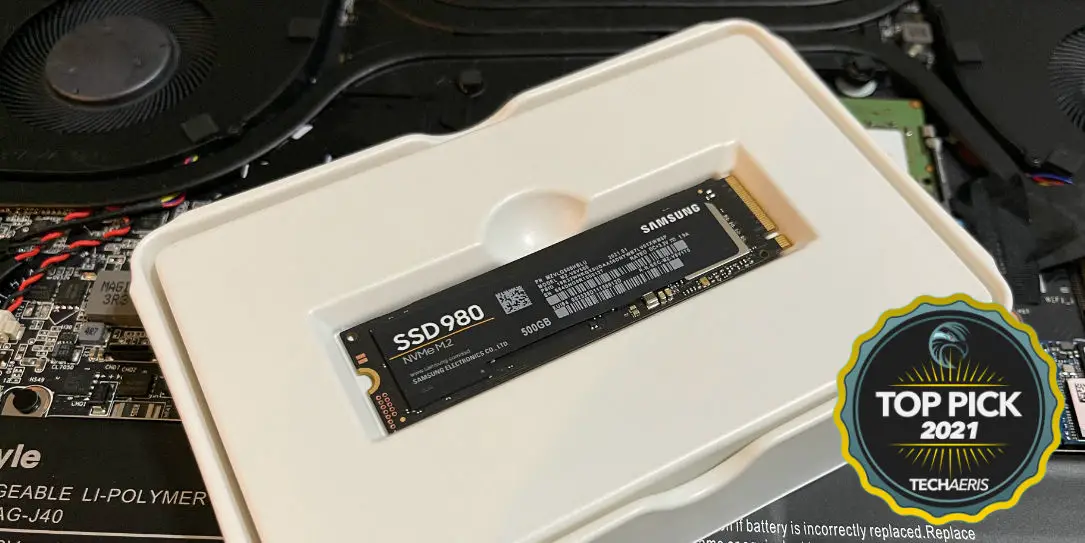Estimated reading time: 7 minutes
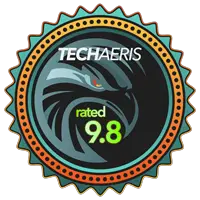
The humble storage device. It has been around in one form or another since the start of computing. I still remember using 8″ floppy disks back in junior high school. Storage devices have evolved greatly over the years and at a pace that’s sometimes hard to keep up with. Now, we have storage devices like the Samsung NVMe SSD 980. This is an M.2 form factor and resembles a RAM stick.
That’s right; the Samsung NVMe SSD 980 looks like a RAM stick, only smaller. Consider that we were all using 2.5″ hard drives in our laptops only a few years ago, that is impressive. The M.2 form factor allows manufacturers to make their chassis thinner, and the SSD format allows for better cooling. Most modern laptops and even desktops are using M.2 drives, and that’s a great thing.
Samsung is well-known for not only its display technology but also its computing technology. The Samsung NVMe SSD 980 is a solid performer and delivers the Samsung reliability many have come to depend on. Read on for the full review of this slim yet powerful M.2 SSD. We should also stress that the 980 sample sent to us is a pre-production unit with pre-production firmware. Results will likely vary from production units available for purchase.
Specifications
The Samsung NVMe SSD 980 has the following features and specifications:
- Interface: PCIe Gen 3.0 x4, NVMe 1.4
- Capacities: 250GB, 500GB, 1TB
- Controller: Samsung
- NAND Flash Memory: Samsung V-NAND 3bit MLC
- Form Factor: M.2 (2280)
- Max Sequential Read: 2,500MB/s (speeds vary from one capacity to the next)
- Max Sequential Write: 3,00MB/s (speeds vary from one capacity to the next)
- Data Security: AES 256-bit Full Disk Encryption, TCG/Opal V2.0, Encrypted Drive (IEEE1667)
- Dimensions: Max 80.15 x Max 22.15 x Max 2.38 (mm)
What’s In The Box
- Samsung NVMe SSD 980
- Documentation and Warranty
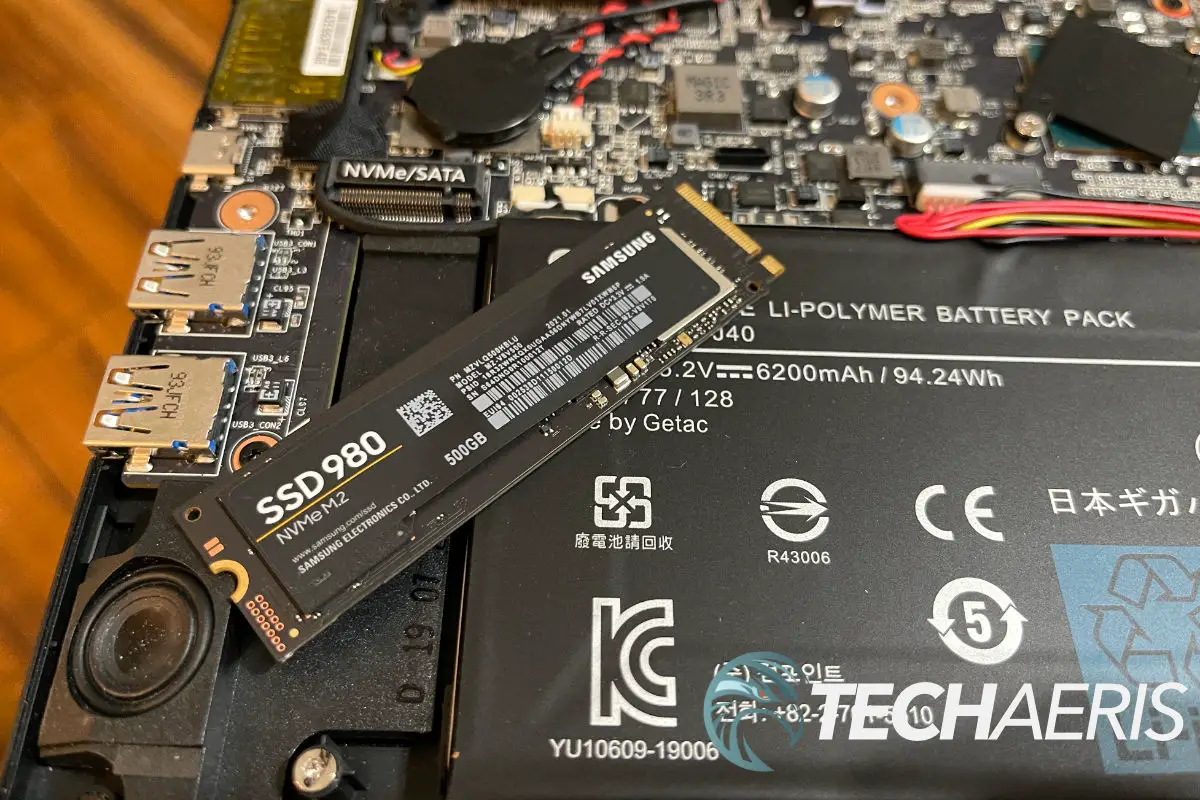
Design
What’s there to say about the design of an internal M.2 NVMe SSD? Not much, right? The only real design cues that would be different from any other M.2 NVMe SSD would be circuit board color choice. Some manufacturers choose to go with the traditional green-colored circuit boards, while others opt for blue or red.
The Samsung NVMe SSD 980 sports a black circuit board with black labels over the top. Really though, no one will spend a lot of time looking inside your computer, so most won’t care what it looks like. There’s really very little that Samsung could do to make improvements or aesthetic changes to a standardized form factor.
Overall, the Samsung NVMe SSD 980 looks sleek and fits right into our Gigabyte Aero aesthetic with the black on black color scheme. We didn’t score this section since the design is standard across the industry.
Installation
Installing the Samsung NVMe SSD 980 into our Gigabyte Aero 15 was pretty straightforward. Not all laptops will have an expansion slot for adding storage, but ours did. The screw to mount the SSD is already on the motherboard. Of course, you’ll first have to remove the laptop’s bottom cover, and that will vary from one system to the next. After I removed the bottom cover it was just a matter of removing the screw, sliding the Samsung NVMe SSD 980 into the socket, and screwing it into place.
We recommend using an anti-static bracelet when handling any internal components inside your computer. This will mitigate the potential of static electricity going from your body into the computer’s circuits, which could potentially harm them.
Overall, installation is a breeze, at least in our case. You may have a more involved installation on some laptops and some desktops. The installation will vary from one computer to the next, but we’d rate this as easy to install.
Software
The Samsung NVMe SSD 980 will be supported by Samsung Magician 6.3, which is supposed to be released sometime in March. We did not have access to Magician 6.3, so we could not test the SSD software interface. We should also remind you that the sample Samsung sent to us is a pre-production sample with pre-production firmware. Our results may vary from production units available for purchase. We did not score this section as Magician 6.3 is still not available.
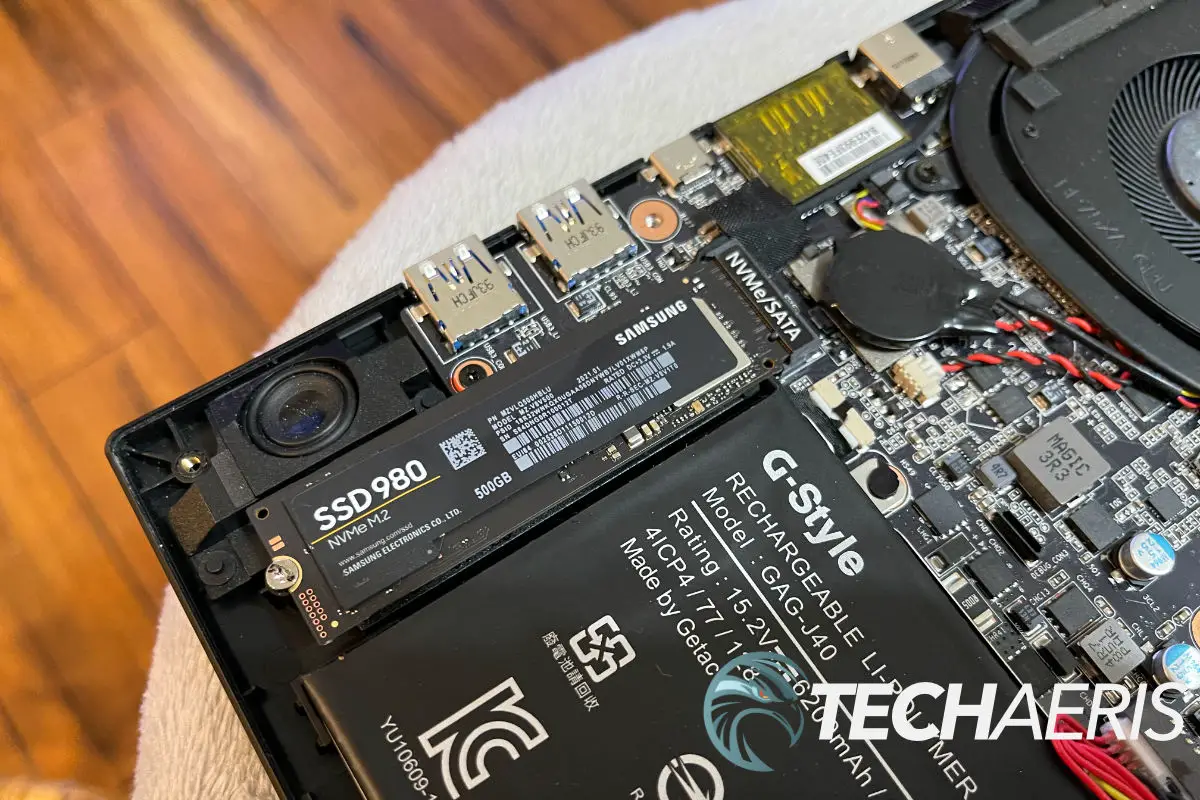
Performance
Before we jump any further into this review, we should note that we did not evaluate this drive as a replacement drive for an existing system. You can certainly purchase the Samsung NVMe SSD 980 as a replacement drive and then clone your existing drive to the 980. But since our Gigabyte Aero 15 already has a pretty capable NVMe SSD installed, we opted to use the 980 as extra storage to alleviate our main drive’s burden.
If you are purchasing the Samsung NVMe SSD 980 as a replacement drive, Samsung Magician does contain the Samsung Data Migration Software, which should allow you to migrate/clone your existing drive to the 980 easily.
Testing or benchmarking speeds of drives can produce some wildly different results. I don’t game on PC, so I did not test the 980 for gaming purposes. I use my laptops for creative purposes such as video and photo editing. I should also stress that your RAM size will also affect your SSD speeds. Having more RAM alleviates some of the load from your SSD, making for overall better performance.
While working in 4K on DaVinci Resolve 17, I was able to move clips and edit/save progress very quickly. I never had to wait for more than a second for my projects to save. Exporting an 8-minute 4K video with multiple layers in DaVinci Resolve took around 5-minutes. Of course, these times can vary as well, depending on your frame rates and other elements within your video.
Working in Affinity Designer and Affinity Photo was equally seamless, and saving, exporting, and opening files were all very fast.
As I mentioned earlier, benchmarking drives can produce very different results from one piece of software to the next. We used Crystal Disk, ATTO, and AS SSD to run the numbers for us. We will remind you that our sample is a pre-production unit so production units may give different results. But for those who enjoy numbers, here’s what the results look like.
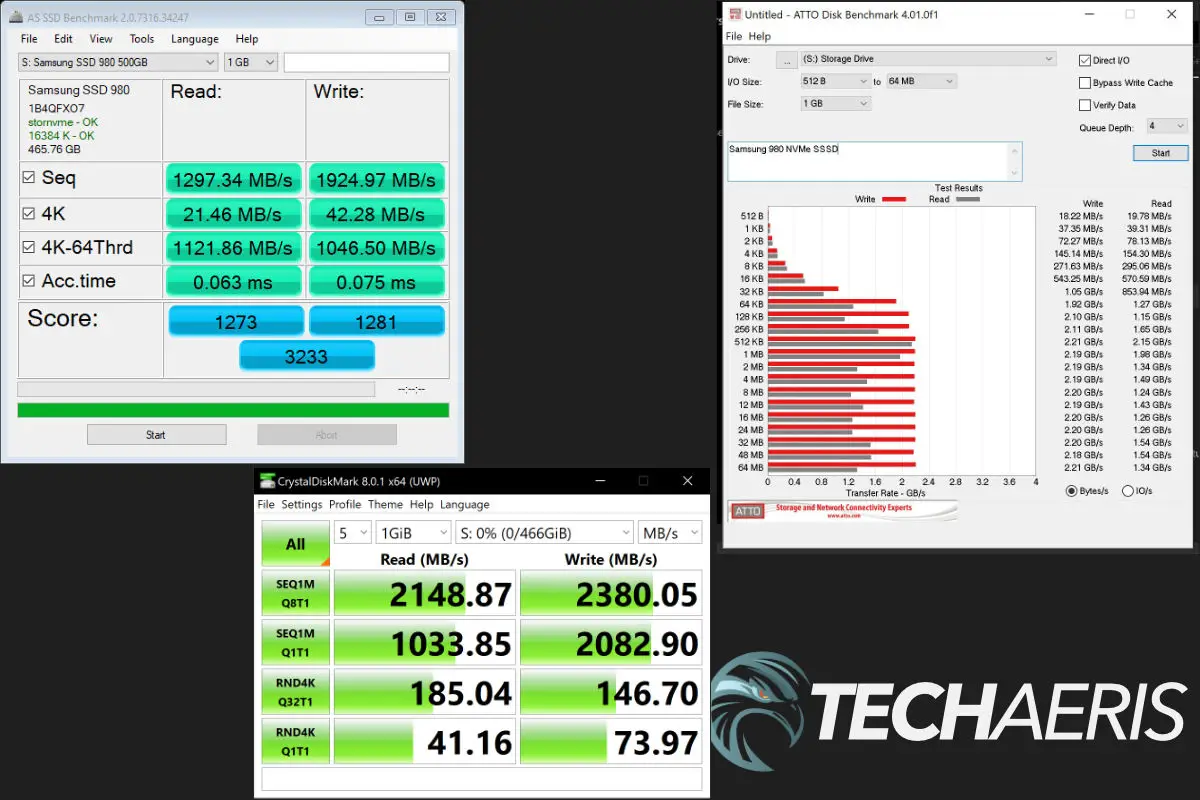
I’m really not sure how much validity these test results carry as you can see, the AS SSD results vary wildly from Crystal Disk. I’m all about real-time performance while I am using the device rather than looking at benchmark numbers. In my estimation, the 980 performed really well and handled my workflow without hesitation. Of course, everyone will be different, and how you use your system will be different from how I use mine.
Overall, for what it’s worth, I think the Samsung NVMe 980 SSD is a worthy addition for systems that have an extra M.2 socket. It makes an excellent extra storage device that you don’t have to worry about forgetting since it’s already installed.
Price/Value
Our Samsung NVMe SSD 980 came in the 500GB variant, which is priced at US$69.99; you can also get the 250GB variant for US$49.99 and the 1TB for US$129.99. While I think there are probably other choices on the market that can meet or beat the 980, most of those are made for gaming. For my use case, I think the 980 is of tremendous value. The US$50 500GB version is outstanding money to value proposition. Get yours on Samsung’s website.
Wrap Up
For creatives looking for a second M.2 NVMe SSD to use for extra internal storage, you can’t beat the Samsung NVMe SSD 980. Gamers can probably also benefit from this drive, but I did not test it in that capacity.
In some of our articles and especially in our reviews, you will find Amazon or other affiliate links. As Amazon Associates, we earn from qualifying purchases. Any other purchases you make through these links often result in a small amount being earned for the site and/or our writers. Techaeris often covers brand press releases. Doing this does not constitute an endorsement of any product or service by Techaeris. We provide the press release information for our audience to be informed and make their own decision on a purchase or not. Only our reviews are an endorsement or lack thereof. For more information, you can read our full disclaimer.

